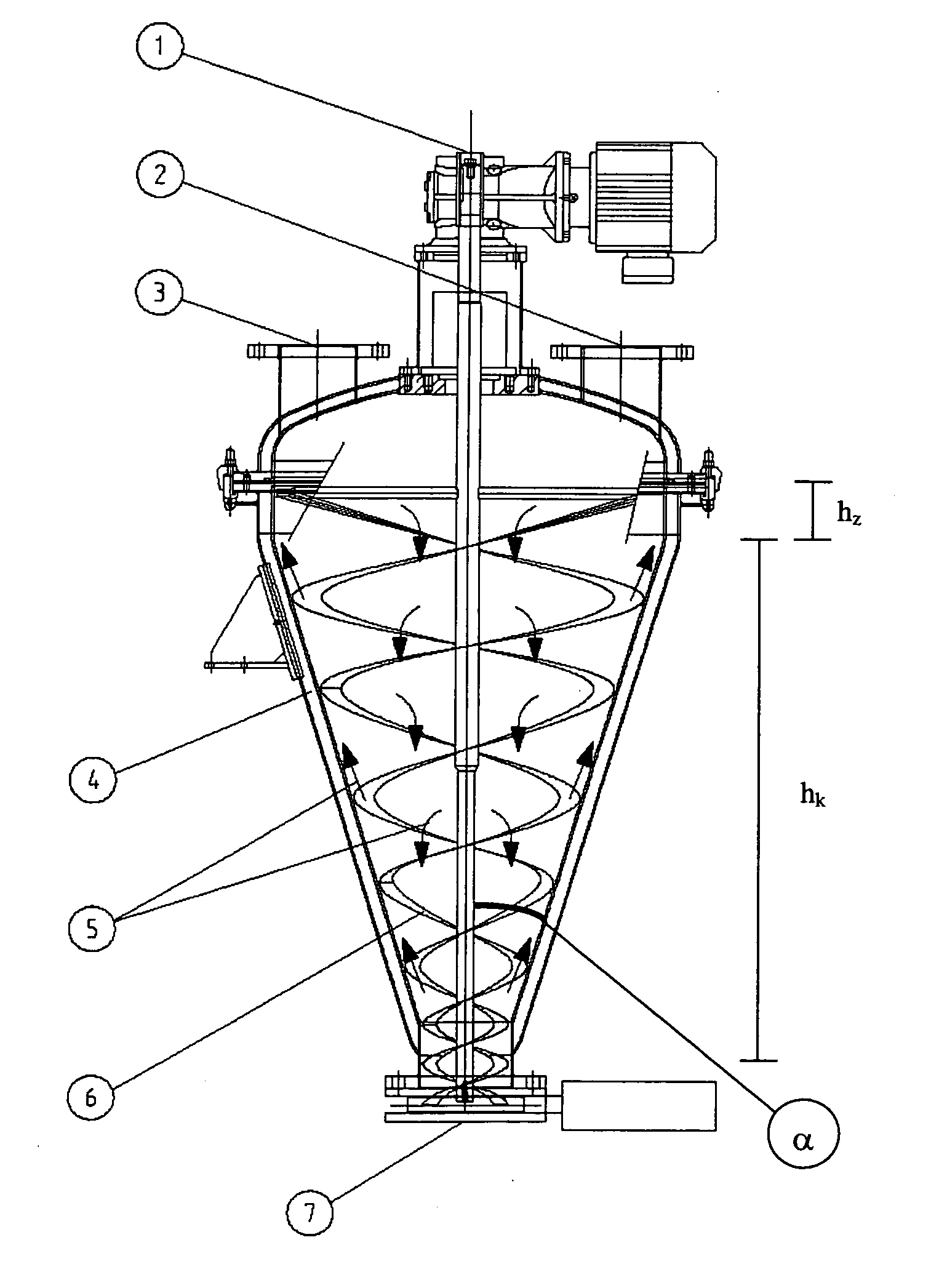Apparatus and process for batchwise polycondensation
a technology of batch-wise polycondensation and apparatus, which is applied in the directions of chemical/physical/physical-chemical processes, transportation and packaging, rotary stirring mixers, etc., can solve the problems of unsuitable batch-wise operation, long reaction times, and apparatus developed for continuous condensation polymerization, and achieve good residue emptying
- Summary
- Abstract
- Description
- Claims
- Application Information
AI Technical Summary
Benefits of technology
Problems solved by technology
Method used
Image
Examples
example 1
[0019] A vertical mixer was charged with 80 kg of a precursor which had been prepared by reacting 38.5 kg of 1,4-butanediol, 21.9 kg of adipic acid and 37.3 kg of dimethyl terephthalate with elimination of appropriate amounts of methanol and water at atmospheric pressure and 190° C., and brought to the polycondensation temperature of approx. 240° C. After 20 ppm of Ti had been added as a catalyst (as tetrabutyl orthotitanate, based on the total mass), the pressure in the reactor was reduced to 2 mbar and 1,4-butanediol was distilled off. The rotation rate of the stirrer was gradually reduced from initially 135 min−1 to 70 min−1 at the end of the experiment. No significant foam layer on the melt could be observed. After a reaction time of 3.5 h, an on-spec polycondensation product having an acid number of 0.47 mg KOH·g−1 and an intrinsic viscosity of 100 cm3·g−1 was obtained.
example 2
(Comparative Example)
[0020] A horizontal single-shaft kneader from List AG, Arisdorf, disclosed, for example, by U.S. Pat. No. 5,121,922 and U.S. Pat. No. 5,934,801, was charged with 80 kg of the same precursor as detailed in Example 1 and brought to the polycondensation temperature of approx. 240° C. After 20 ppm of Ti as a catalyst had been added, the pressure in the reactor was reduced to 2 mbar and 1,4-butanediol was distilled off. The rotation rate was 50·min−1. During the polycondensation, a marked foam carpet formed on the melt surface. After a reaction time of 5 h, a product having an acid number of 0.40 mg KOH·g−1 and an intrinsic viscosity of 77 cm3·g−1 was obtained. This product does not conform to the specifications, since the desired degree of polycondensation could not be achieved within an acceptable reaction time.
[0021]FIG. 1 shows one embodiment of the apparatus. A drive motor (1) drives a double-helical mixer (6), and the rotation rate can be controlled. The prec...
PUM
| Property | Measurement | Unit |
|---|---|---|
| Length | aaaaa | aaaaa |
| Length | aaaaa | aaaaa |
| Length | aaaaa | aaaaa |
Abstract
Description
Claims
Application Information
 Login to View More
Login to View More - R&D
- Intellectual Property
- Life Sciences
- Materials
- Tech Scout
- Unparalleled Data Quality
- Higher Quality Content
- 60% Fewer Hallucinations
Browse by: Latest US Patents, China's latest patents, Technical Efficacy Thesaurus, Application Domain, Technology Topic, Popular Technical Reports.
© 2025 PatSnap. All rights reserved.Legal|Privacy policy|Modern Slavery Act Transparency Statement|Sitemap|About US| Contact US: help@patsnap.com


